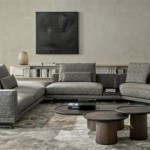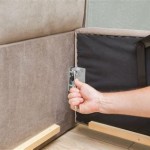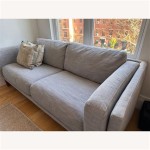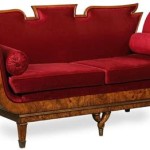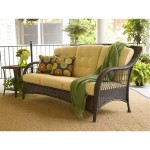How Tall Should A Lamp Be On Sofa Table And Chairs?
Selecting the appropriate lamp height for sofa tables and chairs is crucial for achieving optimal lighting and visual harmony within a living space. A well-chosen lamp not only provides task or ambient illumination but also contributes to the overall aesthetic appeal of the room. Determining the ideal height requires careful consideration of several factors, including the height of the sofa table or side table, the height of the surrounding seating, and the intended purpose of the lamp.
The primary goal is to ensure that the light source is positioned at a comfortable and functional level for reading, conversation, or general relaxation. A lamp that is too short may not provide adequate light coverage, while one that is too tall can create glare and disrupt the visual balance of the room. By understanding the principles of lamp height selection, individuals can create a well-lit and aesthetically pleasing environment.
Understanding the Relationship Between Table Height and Lamp Height
The height of the table on which the lamp will be placed is the foundational measurement for determining the appropriate lamp height. As a general guideline, the combined height of the table and the lamp base should bring the lampshade to approximately eye level when seated. This ensures that the light is directed downwards and outwards, providing adequate illumination without causing direct glare.
For sofa tables, which are typically placed behind a sofa, the table height often ranges from 24 to 30 inches. If the lamp is intended to provide reading light for individuals seated on the sofa, the lampshade should ideally reach a height of around 58 to 64 inches from the floor. This means that a lamp with a base height of 28 to 34 inches would be a suitable choice. It is crucial to measure the height of the sofa back as well, to make sure the lamp doesn't get visually lost behind it. The lamp should be taller than the sofa's back for optimal visibility and functionality.
For end tables placed beside chairs, the table height is usually between 20 and 26 inches. In this scenario, the lampshade should ideally be around 54 to 60 inches from the floor when considering the seated eye level. Consequently, a lamp with a base height of 28 to 34 inches would be a suitable option. These measurements are approximate, and minor adjustments may be necessary depending on the specific dimensions of the furniture and the height of the individuals who will be using the space.
The key is to visualize the lamp in its intended location and assess whether the light is directed appropriately. If possible, testing different lamp heights with a temporary lamp or stand can provide valuable insight before making a final purchase. Consider as well the lamp shade. A taller, narrower lamp shade could be preferable if space is at a premium. A wider lamp shade would be better in a wider, more open area.
Considering the Seating Arrangement and Intended Use
The height of the surrounding seating and the intended use of the lamp are also critical factors in determining the appropriate lamp height. If the lamp is primarily intended for reading, it should be positioned to provide adequate light coverage over the reading material without causing glare. This typically means placing the lampshade slightly above eye level when seated, but within comfortable reach for adjusting the light as needed.
For a reading lamp placed beside a chair, the lampshade should be positioned so that the bottom edge of the shade is approximately at shoulder height when seated. This allows the light to be directed downwards towards the reading material, minimizing glare and providing optimal illumination. The ideal height may vary slightly depending on the height of the chair and the individual's preferred reading posture.
If the lamp is intended primarily for ambient lighting, the height may be adjusted to create a softer, more diffused glow. In this case, a taller lamp may be appropriate, as it will cast light over a wider area. However, it is important to ensure that the lampshade is still positioned at a comfortable height to avoid glare. A dimmer switch can be particularly helpful in this situation, allowing the user to adjust the brightness of the light as needed.
In addition to the intended use of the lamp, it is also important to consider the overall layout of the room and the placement of other light sources. If the room already has ample overhead lighting, a shorter lamp may be sufficient for providing task or accent lighting. Conversely, if the room is dimly lit, a taller lamp may be necessary to provide adequate illumination but even then it's important to consider the brightness of the light bulb itself, in addition to lamp height.
It’s also crucial to think about the specific activities that will be happening around the sofa table or chair. If the table is frequently used for writing or other tasks that require focused light, a lamp with an adjustable arm or gooseneck may be a beneficial choice. This allows the user to direct the light exactly where it is needed. Consider directional lighting, such as adjustable spotlights, if a more focused beam of light is needed.
Aesthetic Considerations and Lamp Style
Beyond functional considerations, the aesthetic appeal of the lamp should also be taken into account when determining the appropriate height. The lamp should complement the overall style of the room and enhance the visual harmony of the space. The lamp's design, material, and finish should align with the existing décor and furniture.
For instance, in a contemporary living room, a sleek and minimalist lamp with a tall, slender base may be a suitable choice. This type of lamp can add a touch of modern elegance to the space without overpowering the other elements of the room. Conversely, in a more traditional setting, a lamp with a more ornate base and a decorative lampshade may be more appropriate.
The size and shape of the lampshade should also be carefully considered. A lampshade that is too large or too small can disrupt the visual balance of the lamp and the surrounding furniture. As a general rule, the lampshade should be approximately two-thirds the height of the lamp base. The width of the lampshade should also be proportionate to the width of the table on which the lamp is placed.
The color and texture of the lampshade can also have a significant impact on the overall aesthetic of the room. A light-colored lampshade will allow more light to pass through, creating a brighter and more airy feel. A darker lampshade will absorb more light, creating a warmer and more intimate atmosphere. A lampshade with a textured surface can add visual interest and depth to the room.
Furthermore, the material of the lamp base should complement the other materials in the room. A lamp with a metal base may be a good choice for a modern or industrial-style living room, while a lamp with a wooden base may be more suitable for a traditional or rustic-style room. Glass lamp bases are often used to make a room feel lighter and more airy and can be beneficial in smaller spaces.
Ultimately, the choice of lamp style and height is a matter of personal preference. However, by considering the functional and aesthetic factors outlined above, individuals can make informed decisions that enhance the beauty and functionality of their living spaces. It is also important to consider the size and shape of the room itself. In a small room, a smaller lamp may be more appropriate, while in a larger room, a larger lamp may be necessary to create a sense of balance and proportion.
The placement of the electrical outlet should also be considered when determining the appropriate lamp height. If the outlet is located close to the table, a shorter lamp may be sufficient. However, if the outlet is located further away, a taller lamp may be necessary to ensure that the cord reaches the outlet without being too taut or unsightly. Cord management is another factor that can add to or detract from the aesthetics of the space.

22 Living Room Lighting Rules You Need To Know Laurel Home

How Tall Should End Table Lamps Be

Sofa Table Lamp Height How To Choose The Right One

How Tall Should A Lamp Be On An End Table Perfect Tips Quick Guide Hirosart

Sofa Table Lamp Height How To Choose The Right One

Table Lamp Height Guide Our Best Tip For Choosing The Right Lamps Plus

How To Place Lamps On A Buffet Or Console Linda Merrill Interior Designer Decorator South Shore Massachusetts

Sofa Table Lamp Height How To Choose The Right One

Sofa Table Lamp Height How To Choose The Right One

Sofa Table Lamp Height How To Choose The Right One


